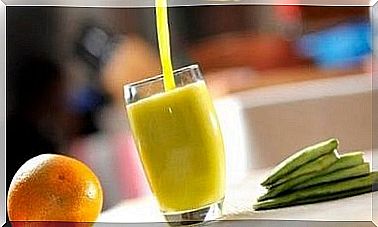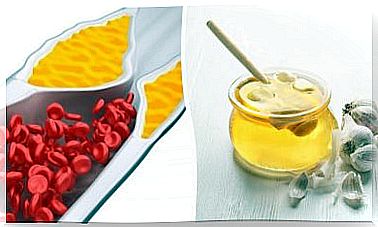How Nutritious Is Cream Cheese?
According to CODEX, cream cheese is a soft, spreadable, unripened and rindless product that, due to its texture, can be easily mixed with other foods. But its high fat content makes it a respectable dairy for healthy diets.
However, the fat in milk can have some under-publicized benefits that we’ll get to later. In addition, cream cheese and its types, such as shake, double cream, flavored and others are used in cooking for many sweet and savory preparations that give it a unique flavor.
We are clear that cream cheese is widely consumed for its flavor, versatility and texture. But do you know what you eat in each serving? Do you know how they do it? If you keep reading, you will soon find out and discover its use in the kitchen.
How do you make cream cheese?
As published in the Journal of Dairy Science , the raw material for making cream cheese is heavy cream or a mixture of cream and milk. The cream is pasteurized and transformed into very small fat droplets. Lactic acid bacteria are then added which will ferment the cheese and make it more acidic.
The following is the addition of salt and certain additives such as gelatin, starches and other thickeners and emulsifiers, endorsed by the same CODEX. At the end the rennet is added. Foods magazine indicates that this is an enzyme of plant or animal origin that breaks down milk protein to coagulate it.
Once firm, everything is mixed evenly before packing hot or cold. The minimum amount of fat in standard cream cheese, according to CODEX, is 25 grams per 100 grams of dairy product and 67% water. Other fat values vary according to the preparation.
Nutritional value and quality
The food table of the United States Department of Agriculture and INCAP / PAHO establish the following values for macro and micronutrients per 100 grams of cream cheese:
- Water : 54%.
- Fat : 32%.
- Saturated fat : 21.43%.
- Protein : 7.1%.
- Carbohydrates: 7.14%.
- Calories : 321 calories.
- Vitamin A : 300 micrograms of retinol.
- Riboflavin : 0.20 milligrams%.
- Calcium : 71 milligrams%.
- Phosphorus : 104 milligrams%.
This dairy has a high fat content, of which 67% is saturated. It contains less protein, calcium and phosphorus than other cheeses. It has a good supply of vitamin A.
Light cream cheese contains 67% water, 7.8% protein, 8% carbohydrates and 15% fat. The vitamin A values are lower than the traditional one, with 160 micrograms. Saturated fat is 9% and calcium is 148 milligrams. Contains 40% fewer calories than standard.

Fatty acids
A good part of the fatty acids in heavy cream are very small and this favors their absorption in the intestine. Professor Gaspar Ros comments that they can be used as a quick source of energy.
One of them is butyric, which, according to the journal Nutrition Hospitality, benefits the cells of the colon and improves intestinal health.
Protein type
The protein present in heavy cream is casein and whey protein. A group of experts reached a consensus that these are of high biological value, since they contain many of the essential amino acids, such as lysine.
However, its content is not high enough to be recommended in high protein diets.
Carbohydrates
Most of the carbohydrate present in this product is degraded by the lactic acid bacteria added during its production. According to the magazine Temas Agrarios, these microorganisms transform lactose into lactic acid, which conditions the intestine to prevent the growth of disease-causing bacteria.
Vitamins
The main cream cheese vitamin is vitamin A. This is considered important for visual development, for bone growth and for the immune system.
One serving provides 84 micrograms of retinol, which represents 10% of the recommended value, according to ALAN magazine.
Minerals
As in other cheeses, calcium and phosphorus are the most abundant minerals in cream cheese, but they are found in less quantity, since they contain less protein. A serving of 1 hour a day barely covers 2% of the recommended calcium.
Calories
Traditional cream cheese has a very high caloric intake. When spreading a bread or biscuits with a portion of 28 grams we consume 90 calories. So you have to be careful with the energy intake of this product in the diet.
How can cream cheese be used in the kitchen?
The texture and flavor of cream cheese are the greatest culinary strengths of this delicious dairy. It can be used in both sweet and savory dishes.
The most common way to use it is to spread cookies, toast, muffins, as an ingredient in fillings, for baked potatoes or sandwiches.
You can also prepare some delicious creamy dressings to replace the cream and serve them with pasta, fish, chicken or vegetables. If you combine it with spices the flavor will be explosive.
In confectionery it is perfect for fillings and toppings, such as for carrot cake. The ice creams also use cream cheese as a base combined with assorted fruits. The brownies and cheesecakes are distinguished when prepared with the product.
As highlighted by Brighenti and other researchers, the characteristics of cream cheese make it ideal for enhancing texture. So 2 tablespoons of puff pastry and focaccia make them softer and richer.
With cream cheese you can dare everything in the kitchen. For example, a fruit or vegetable smoothie with cream cheese will give these drinks creaminess. Just let your imagination run wild and the product will take care of the rest.
Benefits of cream cheese
In addition to the nutritional contributions, cream cheese has some benefits that we will discuss below.
May be a potential probiotic
According to the World Gastroenterology Organization, probiotics are microorganisms that are linked to improving gut health and boosting immune function.
According to the Journal of Biological and Health Sciences, this cheese is fermented with certain Lactobacillus that may have a probiotic function and are considered safe. Some works show the results of using Lactobacillus casei as a probiotic in cream cheese, obtaining a product of optimum quality.
It is low in lactose
Many people do not tolerate lactose in milk, since they lack the enzyme that breaks it down in the intestine. It causes bloating, gas, and diarrhea. Although in the Nutrients magazine it is clarified that some intolerant people accept less than 12 grams of lactose a day.
One ounce of cream cheese contains up to 2 grams of lactose. As long as its consumption is not abused, it should not cause problems in lactose intolerant people. However, studies are required on its effect in these types of patients.
Provides antioxidants
Astiasarán and Martínez refer in their book that milk fat contains carotenoids, such as beta-carotenes, lutein and zeaxanthin. Young and Loug comment on their antioxidant activity, since they block the action of free radicals and their possible cell damage. Some carotenes have a direct effect on visual health.

Cream cheese contraindications
Are there contraindications for this food? Turns out yes. Here we mention some that are of care.
Low protein dairy product
A normal serving of cream cheese provides only 2 grams of protein. So unlike other cheeses, such as goat or cheddar , which contain 7 grams per serving, it is not recommended for high protein diets.
Saturated fat intake
Cream cheese contains high values of saturated fat. A 28 gram serving covers 30% of the Daily Value for an intake of 2,000 calories.
The World Health Organization (WHO) establishes reducing saturated fat intake to less than 10% of total calories to prevent chronic diseases.
High calorie food
Cream cheese is very caloric, so it should be used discretely in weight loss diets. We must take care of the consumption of preparations in which it is used as the main ingredient. It is recommended to replace it with light or low-fat cream cheese .
Very short service life
Despite the fact that cream cheese is pasteurized and destroys pathogenic microorganisms, Choi and other authors assert that its high water content can increase the risk of contamination and shorten the shelf life in the market.
According to some evidence, cream cheese has a half-life of 2 weeks and must be kept refrigerated once uncovered.
Is cream cheese nutritious or not?
The culinary properties and uses of cream cheese that awaken a range of flavors in different preparations are indisputable. But is it nutritious?
Used in a moderate way, it becomes a good source of energy and vitamin A with low lactose content. Traditional cream cheese high in saturated fat and calories can be substituted for other light versions to make it part of healthy diets.
The inclusion of probiotic bacteria as part of its manufacture could also make it more competitive in the market for health-promoting dairy products, but more studies are required in this regard.









